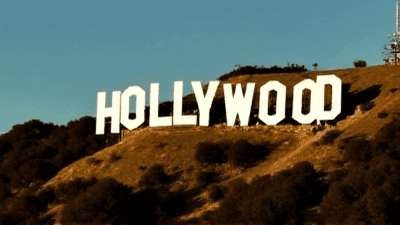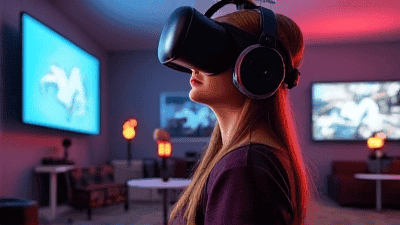
Introduction
The notion of Hollywood's "Golden Age" evokes images of grand epics, iconic stars, and a seemingly boundless era of cinematic innovation and dominance. Yet, a pervasive sentiment suggests this era has long since faded, replaced by an industry grappling with unprecedented shifts. This article delves into whether this perception holds true, examining the fundamental changes transforming the film industry and challenging its traditional metrics of success. The discussion will navigate the complex mechanisms currently reshaping the entertainment landscape, moving beyond simplistic nostalgic views.
Understanding Hollywood's current trajectory is crucial for the entire entertainment ecosystem, impacting filmmakers, distributors, and global audiences alike. The industry, valued at hundreds of billions, faces intense scrutiny regarding declining theatrical attendance, the rise of streaming giants, and an increasing reliance on established intellectual property. These developments fuel controversies surrounding creative freedom versus commercial viability, and the shifting definition of "stardom." Grasping these dynamics is essential for industry stakeholders to adapt and for cultural observers to appreciate the evolving art form. What impact would it have on our understanding or practice of filmmaking and cultural consumption if we failed to fully comprehend the intricate forces at play in contemporary Hollywood?
Echoes of Grandeur

Defining Hollywood's Golden Era and its Dissolution
Hollywood's "Golden Age," generally spanning from the late 1920s to the early 1960s, represented a period of unprecedented creative and economic prosperity characterized by the powerful studio system. During this era, major studios like MGM, Warner Bros., and 20th Century Fox operated like industrial factories, controlling every aspect of film production, distribution, and exhibition through vertical integration. They maintained stables of contract stars, writers, and directors, fostering distinct house styles and consistent output. Audiences flocked to opulent movie palaces, viewing cinema as a primary form of entertainment. Films from this period, such as "Casablanca" (1942) and "Gone With the Wind" (1939), established enduring narrative conventions and cinematic language, cementing Hollywood's global cultural hegemony. The end of this era is often attributed to a confluence of factors: the 1948 Paramount Consent Decrees, which dismantled vertical integration by forcing studios to divest their theater chains; the rise of television as a competing home entertainment medium; and changing social mores that challenged established censorship codes and traditional narratives. These shifts broke the studios' tight grip, ushering in an era of greater independent production but also financial uncertainty and a fragmented audience base, fundamentally altering the industry's economic and creative landscape. This gradual unravelling marked a profound transformation, moving from a structured monopoly to a more volatile, competitive environment.
Economic Riptides
Navigating Shifting Revenue Streams and IP Dominance
The economic underpinnings of modern Hollywood bear little resemblance to its Golden Age predecessor. Today, the industry is defined by a significant shift from theatrical dominance to a multi-platform revenue model, heavily reliant on streaming subscriptions, video-on-demand (VOD), and extensive ancillary markets (merchandise, theme park attractions). The traditional box office, once the sole arbiter of success, now serves primarily as a marketing launchpad for subsequent revenue streams. A major trend is the overwhelming emphasis on established Intellectual Property (IP)—pre-existing franchises, comic book adaptations, and remakes. Studios prioritize recognizable brands like the Marvel Cinematic Universe or "Star Wars" due to their built-in fanbases and perceived lower risk in an increasingly competitive content landscape. This strategy aims to guarantee initial viewership, which is crucial for maximizing returns across various windows, including theatrical release, premium VOD, subscription streaming services, and eventual broadcast licensing. This shift is evident in production budgets, which often soar past $200 million for tentpole films, creating a winner-take-all environment where mid-budget, original films struggle to secure funding unless they attract major star power. The data below illustrates how revenue sources have diversified over time.
| Revenue Source | 1950s Dominance | 2020s Contribution | Change |
|---|---|---|---|
| Theatrical Box Office | ~90% | ~25-30% | Significant Decline |
| Home Entertainment (Physical/Digital) | ~0% (Pre-VCR) | ~30-35% | Major Growth |
| Streaming Subscriptions | 0% | ~25-30% | Emergent Powerhouse |
| Merchandise/Licensing | Minor | ~10-15% | Increased Focus |
This table highlights a dramatic rebalancing of where Hollywood generates its income. While theatrical exhibition remains a vital component for prestige and initial buzz, it no longer dictates the entire financial health of a film or studio. The meteoric rise of home entertainment and, more recently, streaming, demonstrates a profound shift in audience consumption habits and distribution strategies. Studios like Disney and Warner Bros. have invested heavily in their own streaming platforms, using their vast IP libraries to attract and retain subscribers, directly challenging traditional theatrical windows. This diversification offers resilience but also intensifies the content arms race, where hundreds of millions are spent annually to capture and retain audience attention, further solidifying the dominance of IP-driven content.
Creative Metamorphosis

Evolving Narratives and Global Perspectives
Beyond economics, Hollywood's creative landscape has undergone a profound metamorphosis, challenging the homogenous narratives often associated with its Golden Age. While classic cinema boasted its share of masterpieces, storytelling was largely confined to specific genres and often presented through a predominantly white, male, and American lens. Today, there is an increasing, albeit imperfect, push for diverse voices, stories, and perspectives both in front of and behind the camera. The rise of independent cinema, facilitated by more accessible technology and film festivals, has allowed for unique, often challenging, narratives to gain critical acclaim and audience recognition. Films like "Parasite" (2019) winning Best Picture at the Academy Awards, or the critical and commercial success of "Black Panther" (2018), illustrate a growing appetite for stories that reflect a globalized world and varied cultural experiences. Furthermore, technological advancements in visual effects (VFX) have enabled fantastical worlds and epic spectacles once unimaginable, fundamentally altering the scope of cinematic storytelling. This expansion, however, also presents a challenge: while blockbusters often prioritize spectacle over intricate plot, independent productions continue to push boundaries, leading to a broader spectrum of cinematic offerings. The emphasis is less on a singular, dominant style and more on a fragmented yet richly diverse ecosystem of narrative possibilities.
Conclusion
The question of whether Hollywood's "Golden Age" is truly over isn't a simple yes or no; rather, it's about recognizing a fundamental transformation from one dominant paradigm to another. The classic studio system, with its unwavering control over production and distribution, its stable of stars, and its relatively homogenous narratives, has unequivocally faded. We've witnessed a dramatic shift in economic models, driven by the fragmentation of revenue streams and the undeniable rise of streaming platforms. The industry's reliance on established Intellectual Property to mitigate risk in a hyper-competitive market has reshaped both production budgets and creative priorities, with tentpole franchises dominating cultural discourse and box office returns. Furthermore, the creative landscape has expanded significantly, embracing more diverse voices and global narratives, even as technological advancements redefine the possibilities of cinematic spectacle. Hollywood hasn't ended; it has evolved into a more complex, interconnected, and often contradictory global entertainment machine.
Looking ahead, Hollywood faces ongoing challenges and opportunities that will continue to shape its trajectory. The content arms race among streaming services will intensify, potentially leading to market consolidation and a re-evaluation of subscription models. The debate between theatrical exclusivity and day-and-date streaming releases will continue, influencing how audiences consume films. Macro scientific policies, particularly those related to intellectual property and anti-trust regulations, could impact studio mergers and acquisitions. Technologically, advancements in AI and virtual production promise to revolutionize filmmaking techniques, while interdisciplinary integration with gaming and immersive experiences offers new avenues for storytelling and monetization. To truly thrive, Hollywood must balance commercial viability with artistic innovation, foster emerging talent, and continue to reflect the diverse world it seeks to entertain. Continuous research into audience behaviors, global market dynamics, and technological frontiers remains paramount for navigating this ever-changing landscape.
Frequently Asked Questions (FAQ)

Q: Has the quality of Hollywood films declined since the "Golden Age"? A: The perceived decline in film quality is a complex and often subjective matter, not easily answered with a simple yes or no. During Hollywood's Golden Age (roughly 1930s-1960s), films like "Citizen Kane" or "The Godfather" (though slightly later) set high benchmarks for cinematic artistry and narrative depth. However, this era also produced a vast number of formulaic, B-movies that are largely forgotten today. The "quality" often associated with the Golden Age is filtered through nostalgia and a focus on its celebrated classics. In the modern era, the sheer volume of content produced has exploded, largely due to streaming platforms. This means there's a wider range of quality, from highly acclaimed independent films and prestige dramas (e.g., "Nomadland," "Everything Everywhere All At Once") to critically panned blockbusters or disposable streaming fare. While some argue that the dominance of franchise films prioritizes spectacle over substance, there's also an unparalleled diversity in storytelling, with more voices from different backgrounds getting opportunities. Moreover, technological advancements have enabled visual storytelling that was previously impossible. So, rather than a decline, it's more accurate to say the definition and distribution of "quality" have diversified. Audiences now have access to a broader spectrum of cinematic experiences, some exceptional, some mediocre, reflecting a highly fragmented and dynamic industry.
Q: Is streaming entirely responsible for the perceived end of Hollywood's traditional cinema experience? A: While streaming services have undoubtedly played a monumental role in reshaping Hollywood's traditional cinema experience, it's an oversimplification to place all responsibility solely on them. The decline in the classic "Golden Age" model began decades before streaming, with factors like the 1948 Paramount Decrees breaking the studio system's vertical integration, the rise of television in the 1950s offering alternative entertainment, and changing social demographics impacting moviegoing habits. For example, the shift from widespread weekly attendance to more selective, event-based cinema visits started long ago. Streaming, however, dramatically accelerated these existing trends by offering an unprecedented level of convenience, variety, and on-demand access to content directly in people's homes. This fundamentally altered audience expectations, challenging the exclusive theatrical window and eroding the collective ritual of going to the movies. It forced studios to rethink their distribution strategies, leading to hybrid releases and an increased focus on building subscriber bases for their own platforms. The pandemic further intensified this shift, normalizing home viewing. Therefore, streaming is a powerful catalyst and a primary driver of recent changes, but it's part of a longer, more complex evolution of technology, audience behavior, and industry structure that has been unfolding for many decades.








